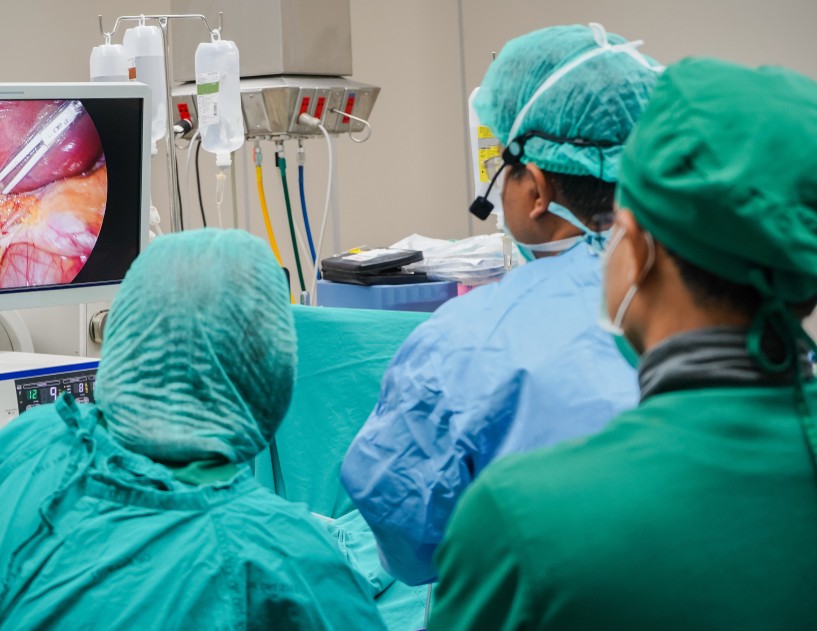 Supply Chain/Technology
Supply Chain/Technology
Surgeon onboarding strategies help optimize supply chain decisions
Editor's Note Effective onboarding practices for new surgeons can set the tone for long term success in many ways, including with supply chain decisions. Surgeons often bring new preferences for products. Taking a proactive approach to prepare a surgeon as a partner in organizational supply chain decisions can help align…
Ambient AI reshapes nursing workflows and boosts patient interaction

Editor's Note Healthcare systems are finding that ambient AI built for doctors does not automatically translate to nursing care, HealthLeaders November 4 reports. However, Mercy for instance is piloting Microsoft’s Dragon Copilot AI for nursing and discovering that the nurse-patient encounter requires tailored design and training to capture accurate, useful…
Session: Automate to elevate—Streamlining pre-, postoperative processes for better outcomes in ASCs

Editor's Note Pairing short, human-led preoperative videos with structured postoperative texting streamlines workflows without sacrificing clinical touch at ambulatory surgery centers (ASCs), said Austin Cheng, CEO of Gramercy Surgery Center in New York City, and Tracy Hoeft-Hoffman, MSN, MBA, RN, CASC, administrator of Heartland Surgery Center in Nebraska, at the…
New patient tool for seeking quality care includes surgery

Editor's Note Mayo Clinic has released a free, digital tool requiring no account or subscription that allows anyone to investigate healthcare quality by city, care specialty, or hospital, an October 30 press release from the health system reports. The tool includes search capability for a range of specific surgical specialties,…
Charlotte surgical institute launches as US hub for robotic, minimally invasive training

Editor's Note A new medical training institute in Charlotte, North Carolina, is positioning itself as a major national destination for robotic and minimally invasive surgery education, Axios Charlotte October 29 reports. The North American headquarters of IRCAD (Institut de Recherche contre les Cancers de l’Appareil Digestif, or Research Institute Against…
Advances in ambient AI bring precision to OR performance

Pinpoint accuracy in surgical technique has advanced beyond what many ever thought possible. Unfortunately, such refinements have been slower to reach the perioperative business front. OR leaders often rely on vague metrics and educated guesses to guide their teams. Ambient artificial intelligence (AI) is changing that. When integrated with data…
Streamlining surgical workflow with better team communication

Effective communication is the foundation of patient safety in the modern surgical environment. Most surgical procedures depend on seamless collaboration among surgeons, nurses, surgical technologists, and anesthesiologists, and when communication breaks down, patient risk rises sharply. In 2024, the American College of Surgeons reported standardized surgical handoffs improved adherence to…
Opening keynote: Healthcare's 'Blockbuster Moment'—Innovation, Disruption, and the Future of Nursing

Editor’s Note Healthcare cannot afford to “rewind,” said Dan Weberg, PhD, MHI, RN, FAAN, executive director of nursing workforce development and innovation at Kaiser Permanente, during his opening keynote on leading and embracing innovation in healthcare. According to Dr Weberg, healthcare’s “blockbuster moment” has arrived, and leaders must choose to…
Robots reshape surgical services, part 2: Building, sustaining success

Takeaways • Determining the return on investment (ROI) for a robot-assisted surgery (RAS) program should include anticipated surgeon volume and past cases where RAS could have been used. • Some organizations dedicate staff to RAS cases, while others orient all to these procedures. • Offering ROI after hours require careful…
Editorial: Advancing surgical care with AI, robotics

Current literature shows artificial intelligence (AI) is no longer a distant concept in surgical care. Innovative medtech has entered clinical practice with measurable impact, although the field remains in early stages of implementation—promising in scope, but still facing challenges with data quality, reproducibility, and integration. For instance, a 2024 systematic…

 Free Daily News
Free Daily News